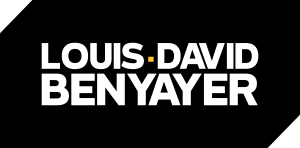Let’s get back to where we started! The question is to decide on a positioning in the data value chain: which activities are key, which should be mastered internally, what to outsource? which partnerships to forge?
« Strategy is the creation of a unique and valuable position, involving a different set of activities. The essence of strategy is to choose activities that are different from rivals » (Porter, 1996)
Then, how to decide and enact a distinctive positioning?
Well, of course, it depends on who you compare you to. The problem is that competition layers are more numerous than they used to be. For example, as we described previously, Siemens competes not only with their traditional direct competitors but also with tech companies and integrators.
In this battle, each company leverages its own capabilities to build a distinctive positioning which is reflected in their make-or-buy decisions.
Make-or-buy decisions differ between tech companies and incumbents. Tech companies enter the market leveraging capabilities the incumbents do not master (service design, community building, platform architecture and management, …). When it comes to the data and analytics value chain, the choices differ particularly at two parts of the data value chain: collection (activities and assets to collect, validate and store data) and analysis (activities and assets to analyse and generate insights). To have an edge against incumbents, tech companies are more likely to use a make approach whereas, for resource efficiency, incumbents are more likely either to source off-the-shelves services or to buy companies that developed a domain-specific solution.
Make-or-buy decisions differ also between direct competitors, for different reasons. An interesting example to illustrate this is how BMW and Renault made opposite decisions. Both companies faced the same challenge, i.e. accessing navigation and map data. BMW partnered with Daimler and Audi to buy Here, a company that developed a navigation and map solution. Buying the company has a clear advantage: develop a proprietary solution to escape from the dependence on Google. It’s interesting to note that Renault did exactly the opposite, namely entering into a global partnership with Google to use their services in Renault cars. It’s probably too early to tell which strategy will pay off better but it’s clear that these decisions reveal the strategies of the two companies: BMW aiming to strengthen its position in the high-end market with proprietary solutions and service extension; Renault concentrating on the middle range market and using all its resources to leverage its manufacturing capabilities. Of course, Renault’s choice comes at a price: sharing value with a partner and being exposed to dependence risks.
Considerations for a distinctive positioning on data
As we saw, the choices are highly context-dependent and no general rule can be formulated for make-or-buy decisions. I propose here a few considerations that emerge from the 3 blog posts:
- The strategy of the company is the main driver for decisions on the data value chain. Where and how the company competes (markets, countries, competitive advantage, …)? Answers to both questions express a global positioning, core challenge and a specific recipe for success. All strongly influence the make-or-buy choice.
- The key and distinctive operational capabilities the company masters better than its competitor (manufacturing, retailing, customer support, design, …) define the scope for building data and analytics capabilities so that they support the strategy: domain-specific datasets or analytics solutions, storage infrastructure, talents, …
- Make-or-buy decisions may take place independently in the 4 parts of the data value chain we described before (generation, collection, analysis and exchange). Among the important questions here: is there a market? what are the dependence risks? Is the market more efficient? How big is the integration risk? How urgent is the delivery? Are internal resources available?
- Defending the uniqueness and the distinction of the positioning fosters long term value creation. There are 2 tactics here: increase rarity (make the data source exclusive, source all talents, …) and reduce imitability (combine technological, human, financial and data resources; embed data resources and capabilities in operational and strategic decision-making). It’s possible to copy some part of Google value chain (infrastructure, data, service, engineers, …). It is impossible to copy the system and in particular the connection between data assets and the business model.

